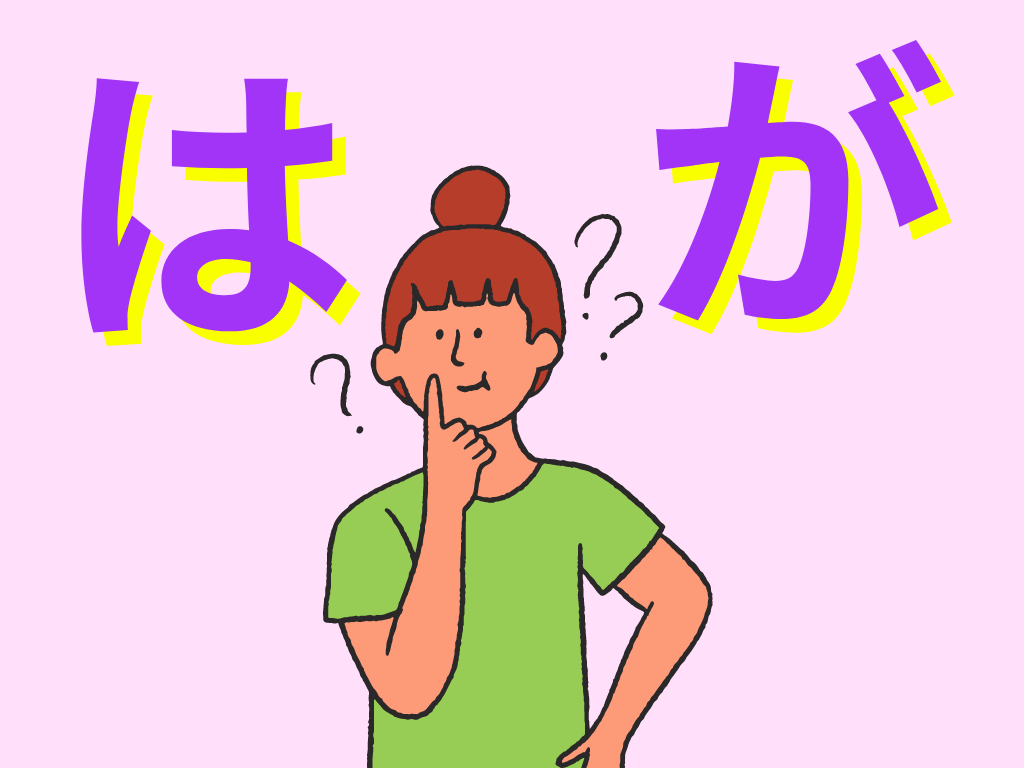Hello everyone!
Today, I’m writing my first blog post😄🎉 I’d like to write things that will be helpful for your Japanese learning✏️, so if you have any requests, please feel free to contact me via the email address listed on the Privacy Policy page.
Today, I’ll be writing about the difference between the particles は(wa) and が(ga), which I’ve received many requests for on social media. Since there are many differences, I will choose five representative examples to discuss today.
1. は is for comparison, が is just talking about the topic.
A. ラーメンは好きです。(Raamen wa sukidesu)
I like ramen (but maybe not other things).
B. ラーメンが好きです。(Raamen ga suki desu)
I like ramen.
Do you understand the difference between these two sentences? In sentence A, there is a nuance that you are comparing ramen with something else. For example, “I like ramen, but I don’t like other Japanese foods,” or “I like ramen, but I don’t like other foods at that restaurant.” It’s a comparison.
On the other hand, sentence B simply expresses that you like ramen, with no comparison.
2. は+important information, important information+が
A. わたしはさきです。(Watashi wa Saki desu.)
I am Saki.(This is a typical self-introduction, focusing on the name “Saki.”)
B. わたしがさきです。(Watashi ga Saki desu.)
I am Saki. (This emphasizes I strongly, as in a situation where you want to
highlight that you are Saki.)
Which one do you use when introducing yourself? Yes! You use は(wa). We place the most important information after は(wa). Normally, you use は(wa) because the most important thing you want to convey when introducing yourself is your name, not “I.” However, if you were a singer who hides their face and has become famous, and people are asking, “Who are they?” then you might use が(ga). We place the most important information before が(ga). Here, the most important thing is I, so you’re saying strongly, “It’s me! I’m Saki!”
3. Phenomenon sentences vs. judgment sentences, or talking about facts.
Seeing that a person has collapsed,
あ!人が倒れている!
(A! Hito ga taoreteiru!)
(あ!ひとがたおれている!)
Oh! A person has collapsed!
This sentence simply describes what you see. When describing a phenomenon as it is, without adding your subjective judgment, you use が(ga).
If someone was about to take your colleague, Mr./Ms. Tanaka’s bag by mistake, you might say: あ!それは田中さんのですよ!
(A! Sore wa Tanaka-san no desu yo!)
(あ!それはたなかさんのですよ!)
Oh! That’s Mr./Ms. Tanaka’s!
This sentence includes your subjective judgment about what you saw.
人はいつか必ず死にます。
(Hito wa itsuka kanarazu shinimasu.)
(ひとはいつかかならずしにます。)
People will inevitably die someday.
Since this is a fact, you use は(wa).
4.Question word + が(ga), は(wa) + question word.
会議は何時からですか。
(Kaigi wa nanji kara desu ka?)
(かいぎはなんじからですか。)
When does the meeting start?
鈴木さんはどこですか。
(Suzuki-san wa doko desu ka?)
(すずきさんはどこですか。)
Where is Mr./Ms. Suzuki?
誰が来ますか。
(Dare ga kimasu ka?)
(だれがきますか。)
Who is coming?
いつがいいですか。
(Itsu ga ii desu ka?)
(いつがいいですか。)
When is good for you?
When you use が(ga), the question word comes before が(ga). When you use は(wa), the question word comes after は(wa).
5. When talking about characteristics
うさぎは耳が長いです。
(Usagi wa mimi ga nagai desu.)
(うさぎはみみがながいです。)
Rabbits have long ears.
When talking about characteristics, you use the sentence structure “Noun 1 は(wa) Noun 2 が(ga) Adj.” If Noun 1 is already known from the context, it can be omitted, and you can say “Noun 2 が(ga) Adj.”
Here’s another example:
大阪は食べ物が美味しいです。
(Osaka wa tabemono ga oishii desu.)
(おおさかはたべものがおいしいです。)
Please note that there are more rules for は (wa) and が (ga). Thank you for reading!

